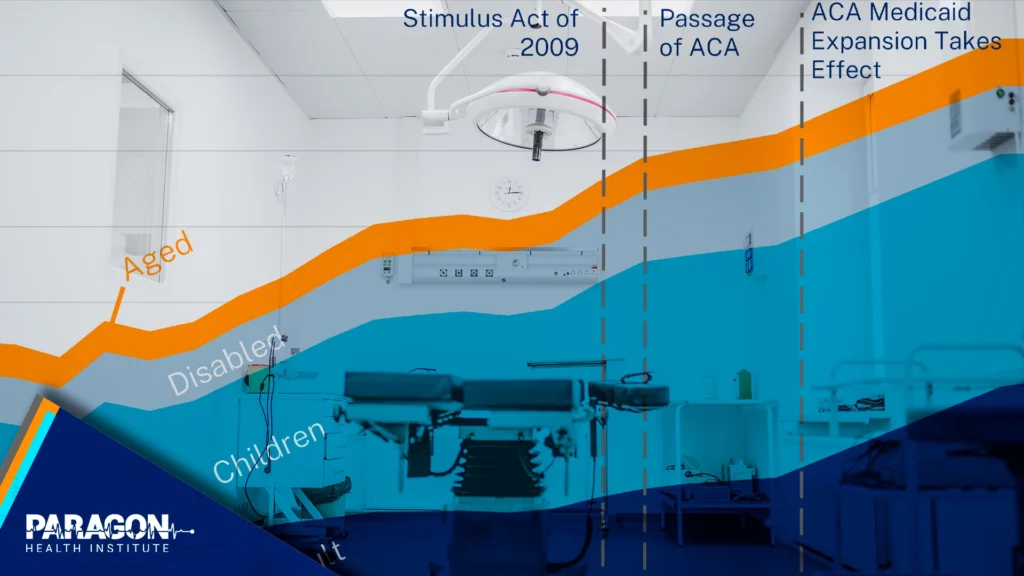Medicaid finances health and long-term care expenses for more Americans than any other program. Medicaid’s substantial growth over the past few decades is one of the major developments in American health policy and spending. Multiple eligibility expansions beginning in the late 1980’s and a massive expansion of the program to able-bodied, working-age adults through the Affordable Care Act (ACA) caused significant growth through 2020. Medicaid enrollment and spending has also skyrocketed with the federal pandemic policy that prohibited states from removing ineligible people from the program.
While Medicaid recipients often suffer from poor access to medical care services and health outcomes generally disappoint, the focus of Paragon’s Medicaid Visuals is to provide information and perspective about the magnitude of its growth.
The figures illustrate the story and trends more appropriately than words, but here are some key takeaways:
- There are now twice as many Medicaid recipients as people in poverty.
- The increase in Medicaid enrollment has been driven by able-bodied, working-age adults who now significantly outnumber elderly and disabled enrollees combined.
- Medicaid enrollment has grown from about 8% of Americans in the late 1980s to a quarter of the population today.
- Driven by federal COVID policies, Medicaid enrollment increased from 65 million people to 82 million people from March 2020 through May 2022.
- Nearly 9% of the U.S. federal budget is spent on Medicaid, a percentage that has tripled over the last three decades.
- Today there are only two workers for each Medicaid recipient. The country’s capacity to finance Medicaid has deteriorated.
- In the late 1980’s, there were more than five workers earning income and paying taxes to financially support each Medicaid recipient.
- Taxpayers spend nearly $20,000 per person in poverty per year through Medicaid.
- Medicaid now represents about 30% of total state spending, roughly the same amount as combined state spending on elementary & secondary education and higher education.
- Three decades ago, states spent over three times more on education than on Medicaid.
- Inflation-adjusted Medicaid spending is up over 500% over the last three decades, which is the leading reason for the growth of state government.
- Federal subsidies for Medicaid are responsible for driving that growth as federal funds received for Medicaid are now seven times greater than federal funds for elementary and secondary education.





